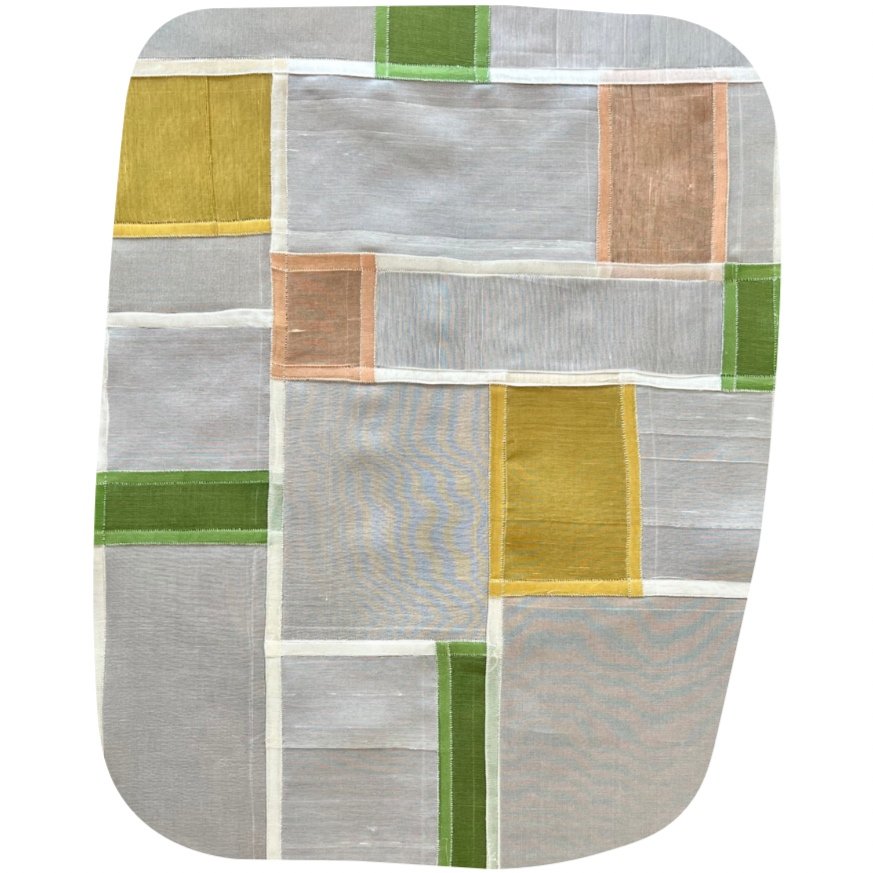HOW IT ALL BEGAN…
I started collecting scraps of fabric from hand-me-down clothing, antique linens, and my mother’s tattered scarf that lay hidden in a box of memories. When collecting these, I didn’t have a plan, I just couldn’t bear to get rid of them. Each piece had its own sentiment and a story that I knew I would one day share.
A new life for these remnants came to fruition when I discovered Bojagi. One evening, I happened across Artist Youngmin Lee’s beautiful work and was enraptured by the symbolism inherent to the practice. I immediately resonated with her work, because it expressed that Bojagi is a symbol of Korean heritage, mindfulness, sustainability, and most of all, storytelling.
I believe there is a fine balance between tradition and innovation. When done thoughtfully, artists are able to keep traditions alive by making them their own and sharing their stories through the work.
I want to continue to gain knowledge and experience of the traditional art form and the history that lies within each stitch. I then plan to expand on Bojagi and make it my own through various techniques and applications. With deep respect to the traditional methods of Bojagi and the practice as a whole, I believe that reimagining some aspects can shed a light on this historic art practice and introduce new audiences to Korean culture.
about the artist
Mariah Bintliff was born and raised in Maine and currently resides in Charleston, South Carolina. She attended SCAD, where she earned her BA in Graphic Design. She utilizes her degree to create an elevated visual experience as a freelance Visual Designer & Storyteller and as a Teaching Artist for projects, workshops, and community events. She works with second-hand textiles and notions to connect to her Korean heritage, practice sustainable living, and share stories through creative exploration.
Mariah just completed a year-long apprenticeship with Master Artist Youngmin Lee and the Alliance for California Traditional Arts. She was awarded by ACTA to experience one-on-one intensive training that would preserve the traditional art form of Bojagi and connect her to her Korean heritage. Mariah dedicated her time to learn Bojagi through a series of projects and continue the thread line of this textile tradition by sharing it with new audiences. Part of the requirement for the apprenticeship program was to organize a public presentation that shares the results of the experience. For theirs, Mariah and Youngmin chose to provide both a workshop and a collaborative exhibit in partnership with the San Francisco School of Needlework and Design.
During the past year, Mariah was inspired to continue introducing others to Korean culture and her sustainably-minded practice. One of the ways in which she has accomplished this was by collaborating with various organizations that could expand her impact through their aligned goals. Mariah has worked with Patagonia and the nation’s oldest creative reuse center, SCRAP, to provide in-person workshops for people from all backgrounds.
For Mariah, Bojagi has become a life-long passion she knows she will endure. She continues to grow her community and connect with others through her brand, Bojagi Blues. You can follow along her journey on Instagram at @bojagiblues or Patreon at patreon.com/BojagiBlues




